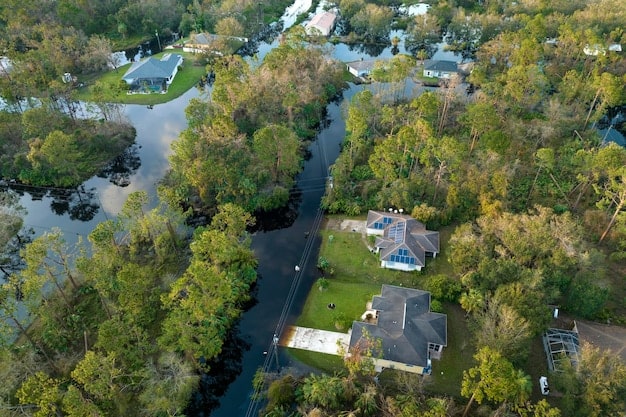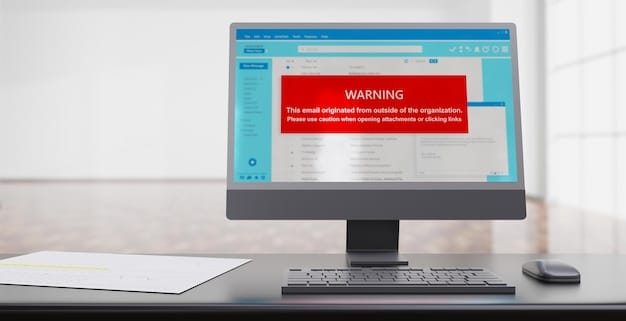Disaster Relief Assistance: Your Guide to Federal Funds After a Natural Disaster

Disaster relief assistance, particularly through federal funds, is crucial for individuals and communities recovering from natural disasters, providing a lifeline to rebuild and restore normalcy.
Natural disasters can leave a trail of devastation, impacting homes, businesses, and entire communities. Navigating the aftermath can be overwhelming, but understanding how to access disaster relief assistance, especially federal funds, is a crucial step towards recovery.
Understanding Disaster Relief Assistance
Disaster relief assistance is a multifaceted system designed to help individuals, families, and communities recover from the devastating effects of natural disasters. It encompasses a range of programs and services, with federal funding playing a pivotal role in the overall recovery process.
Federal assistance is not just about providing financial aid; it’s about rebuilding lives and restoring infrastructure. Recognizing the various forms it comes in can significantly improve your ability to navigate the recovery process.
Types of Federal Disaster Assistance
The federal government offers different types of assistance to meet the diverse needs of disaster survivors. Understanding these categories will help you identify the best resources for your specific situation.
- Individual Assistance: Provides aid to individuals and households, including financial assistance for housing, medical expenses, and other disaster-related needs.
- Public Assistance: Supports state, local, and tribal governments and certain private nonprofit organizations with debris removal, emergency protective measures, and infrastructure repairs.
- Hazard Mitigation Assistance: Funds projects that reduce or eliminate long-term risk from natural hazards, helping communities become more resilient to future disasters.
These programs are typically coordinated by federal agencies such as FEMA, ensuring resources are allocated effectively and efficiently to those who need them most.

The Role of FEMA in Disaster Relief
The Federal Emergency Management Agency (FEMA) is the lead federal agency responsible for coordinating the government’s response to disasters. FEMA plays a crucial role in helping individuals and communities recover from natural disasters.
FEMA’s involvement begins well before disaster strikes, working with state and local governments on preparedness and mitigation efforts.
How FEMA Supports Disaster Recovery
FEMA’s support extends across various phases of disaster recovery, providing a wide range of services and resources.
- Assessing Damage: FEMA teams conduct damage assessments to determine the extent of the disaster’s impact and identify areas of greatest need.
- Providing Temporary Housing: FEMA offers temporary housing assistance, such as rental assistance or temporary housing units, to individuals and families displaced by the disaster.
- Financial Assistance: FEMA provides financial assistance for essential needs, including home repairs, medical expenses, and personal property losses.
FEMA also works with other federal agencies, state and local governments, and voluntary organizations to ensure a coordinated and effective response to disasters.
In sum, FEMA is instrumental in coordinating disaster relief efforts, providing crucial resources and support to help individuals and communities rebuild after natural disasters.
Eligibility Criteria for Federal Disaster Funds
To access federal disaster funds, it’s essential to understand the eligibility criteria. While the specific requirements may vary depending on the program, some general conditions apply to most forms of assistance.
Eligibility depends on several factors including residency verification and demonstrating need.
Key Eligibility Requirements
Fulfilling eligibility requirements ensures that resources are directed to those who genuinely need them and can benefit most from assistance.
- Disaster Declaration: A major disaster declaration must be declared by the President for the affected area.
- Residency: Applicants must be citizens, non-citizen nationals, or qualified aliens.
- Damage Verification: Verifiable damage or loss due to the disaster is required, often through inspections or documentation.
Meeting these criteria is a critical first step in the application process for federal disaster funds, ensuring eligibility for potential aid.
In short, understanding and meeting these basic requirements is your first step toward securing badly needed funding.

Navigating the Application Process for Federal Funds
Applying for federal disaster funds can seem complex, but it’s manageable if you approach it with a clear understanding of the required steps and documentation.
The application is completed online or through disaster recovery centers.
Steps to Apply for Federal Disaster Funds
The application process typically involves these steps:
- Register with FEMA: Register online through the FEMA website or by calling the FEMA helpline.
- Complete the Application: Fill out the disaster assistance application, providing detailed information about your damages and losses.
- Provide Documentation: Submit required documents, such as proof of ownership, insurance policies, and repair estimates.
Following these steps carefully can significantly increase your chances of a successful application and access to much-needed federal disaster funds.
Documentation Needed for Your Application
Providing complete and accurate documentation is crucial when applying for federal disaster funds. Insufficient or incorrect paperwork can significantly delay or even disqualify your application.
The documentation provides evidence of damage and loss.
Essential Documents for Disaster Aid
Here are some of the key documents you’ll typically need to assemble:
- Proof of Identity: Driver’s license, passport, or other government-issued identification.
- Proof of Residence: Utility bills, lease agreements, or property tax statements.
- Insurance Information: Policies covering property, flood, or other relevant disaster-related damage.
Having these documents organized and readily available ensures a smoother application process, increasing the likelihood of receiving timely assistance.
Make certain you have copies of everything before filing the actual papers.
Appealing a FEMA Decision
If your application for FEMA disaster assistance is denied, you have the right to appeal the decision. Understanding the appeals process and how to present a strong case can significantly improve your chances of overturning the initial decision.
The appeal can affect both the individual and the community.
Steps to File an Appeal
Here’s what you need to know about the appeals process:
- Understand the Reason for Denial: Review the denial letter to understand why your application was rejected.
- Gather Additional Documentation: Collect any new or additional documents that support your case.
- Submit Your Appeal: File your appeal within the specified timeframe, typically 60 days from the date of the denial letter.
A well-prepared and documented appeal can make a significant difference, allowing you to access the disaster assistance you need to rebuild your life.
By following these steps, you assert your right to be heard.
| Key Point | Brief Description |
|---|---|
| 🏠 Eligibility Criteria | Must have verifiable damage in a declared disaster area and meet citizenship requirements. |
| 📝 Application Process | Register with FEMA, complete the application, and provide necessary documentation. |
| 📑 Required Documents | Include proof of identity, residence, and insurance policies. |
| ⚖️ Appealing Decisions | If denied, understand the reason, gather additional documentation, and submit an appeal within the given timeframe. |
Frequently Asked Questions
▼
You can register with FEMA online through their website or by calling the FEMA helpline. Have your social security number, contact information, and details about your damages ready.
▼
FEMA assistance typically covers essential needs such as home repairs, temporary housing, medical expenses, and personal property losses directly resulting from the disaster.
▼
The deadline to apply for FEMA disaster assistance is usually 60 days from the date of the disaster declaration. Check the specific declaration for the affected area for exact dates.
▼
Yes, but FEMA assistance may only cover needs not met by your insurance policy. You must first file a claim with your insurance company before applying for FEMA assistance.
▼
Contact the agencies that issued the documents for replacements. You may also be able to provide alternative forms of documentation or sworn statements to support your claim.
Conclusion
Accessing federal disaster funds is essential for recovery after a natural disaster. By understanding the types of assistance available, eligibility criteria, and application processes, individuals and communities can navigate the system more effectively and rebuild their lives.





